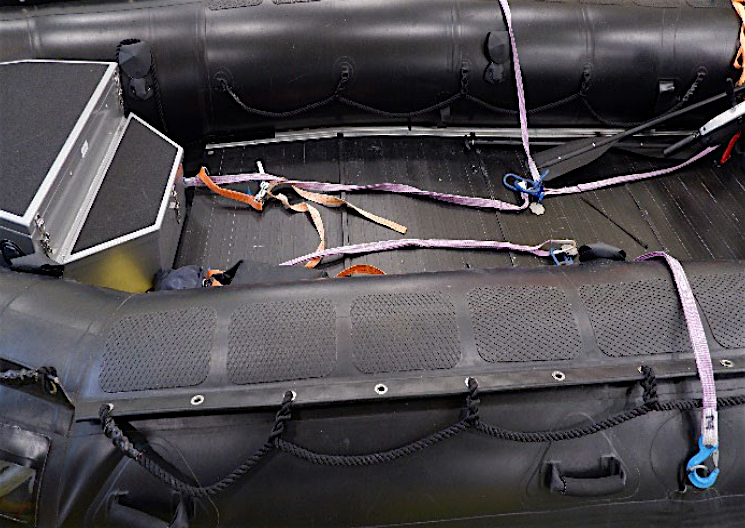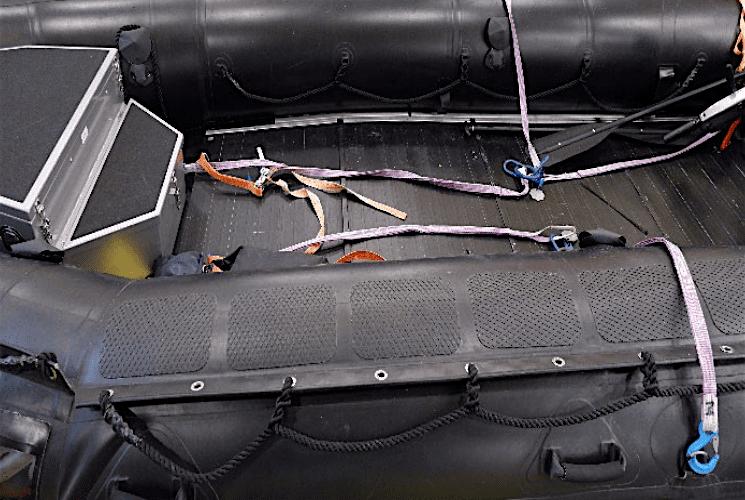(WASHINGTON) — This U.S. Coast Guard safety alert addresses the importance of proper maintenance and adherence to manufacturer’s recommendations for filling/inflating buoyancy chambers on some models of inflatable boats.
During a recent investigation of an incident that occurred involving foreign cruise vessel operations in the Antarctic, a U.S. passenger was severely injured due to a Zodiac Milpro model FC 580/MK5 keel bladder failure while underway on a sightseeing excursion. In calm weather, the keel bladder suddenly ruptured, sending the passenger several feet into the air before landing onto the deck and sustaining serious injuries, including a fractured femur. Another passenger was thrown overboard into the freezing water, risking hypothermia.

An investigation has identified that the keel bladder suffered a rupture due to excessive pressure in the tube. The recommended operating pressure by the manufacturer is 3.4 pounds per square inch (psi) or 240 millibars (mb). An on-scene survey of multiple inflatables on board the cruise ship noted pressures up to and exceeding 9 psi (620 mb) in other keel bladders.
The keel bladder is not protected by a safety relief valve, and the manufacturer recommends that they be inflated with a foot pump to reduce the chance of overpressurization. However, crewmembers were routinely using an air compressor to fill the buoyancy chambers (including the keel tube) prior to the incident. In addition, pressure levels were not being checked using a manometer as recommended by the manufacturer.
The Coast Guard strongly recommends that operators of cruise ships and other companies employing inflatable boats:
• Review all manufacturer recommendations for inflatable boat filling and maintenance to verify those procedures are being followed prior to any boat operations including passenger excursions.
• Use manufacturer recommended inflation devices (e.g., a foot pump) and appropriate pressure measurement tools to avoid over-pressurization.
• Verify that company policy addresses manufacturer recommendations and that crews are properly trained before operating and performing maintenance on inflatable boats.
• Contact the manufacturer of your inflatable boats for any additional recommendations and/or training options they may offer.

